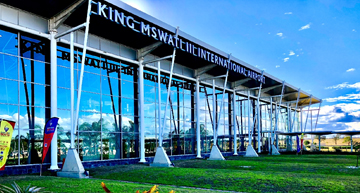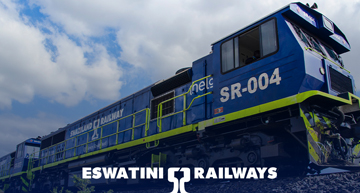About Eswatini
Eswatini, formally the Kingdom of Eswatini and formerly named Swaziland is a landlocked country in Southern Africa. It is bordered by Mozambique to its northeast and South Africa to its north, west, south, and southeast. At no more than 200 km (120 mi) north to south and 130 km (81 mi) east to west, Eswatini is one of the smallest countries in Africa; despite this, its climate and topography are diverse, ranging from a cool and mountainous highveld to a hot and dry lowveld.
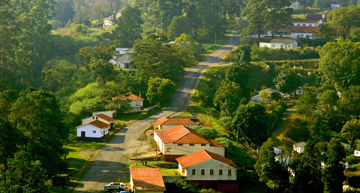
Background

Autonomy for Eswatini was guaranteed by the British in the late 19th century; independence was granted in 1968. A new constitution came into effect in 2006, which included provisions for a more independent parliament and judiciary, but the legal status of political parties remains unclear. King MSWATI III renamed the country from Swaziland to Eswatini in April 2018. Despite its classification as a lower-middle income country, Eswatini suffers from severe poverty and high unemployment. Eswatini has the world's highest HIV/AIDS prevalence rate, although recent years have shown marked declines in new infections.
Demographic profile
Eswatini, a small, predominantly rural, landlocked country surrounded by South Africa and Mozambique, suffers from severe poverty and the world’s highest HIV/AIDS prevalence rate. A weak and deteriorating economy, high unemployment, rapid population growth, and an uneven distribution of resources all combine to worsen already persistent poverty and food insecurity, especially in rural areas. Erratic weather (frequent droughts and intermittent heavy rains and flooding), overuse of small plots, the overgrazing of cattle, and outdated agricultural practices reduce crop yields and further degrade the environment, exacerbating Eswatini's poverty and subsistence problems. Eswatini's extremely high HIV/AIDS prevalence rate – nearly 28% of adults have the disease – compounds these issues. Agricultural production has declined due to HIV/AIDS, as the illness causes households to lose manpower and to sell livestock and other assets to pay for medicine and funerals.
Swazis, mainly men from the country’s rural south, have been migrating to South Africa to work in coal, and later gold, mines since the late 19th century. Although the number of miners abroad has never been high in absolute terms because of Eswatini's small population, the outflow has had important social and economic repercussions. The peak of mining employment in South Africa occurred during the 1980s. Cross-border movement has accelerated since the 1990s, as increasing unemployment has pushed more Swazis to look for work in South Africa (creating a "brain drain" in the health and educational sectors); southern Swazi men have continued to pursue mining, although the industry has downsized. Women now make up an increasing share of migrants and dominate cross-border trading in handicrafts, using the proceeds to purchase goods back in Eswatini. Much of today’s migration, however, is not work-related but focuses on visits to family and friends, tourism, and shopping.
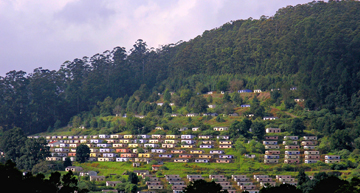
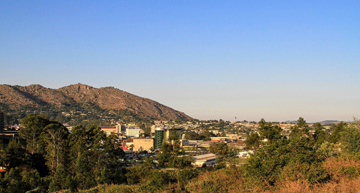
Flag description
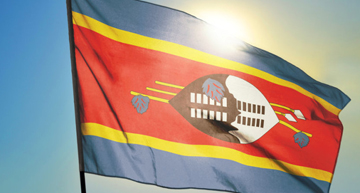
Three horizontal bands of blue (top), red (triple width), and blue; the red band is edged in yellow; centered in the red band is a large black and white shield covering two spears and a staff decorated with feather tassels, all placed horizontally; blue stands for peace and stability, red represents past struggles, and yellow the mineral resources of the country; the shield, spears, and staff symbolize protection from the country's enemies, while the black and white of the shield are meant to portray black and white people living in peaceful coexistence
Environment
Environment - current issues
limited supplies of potable water; wildlife populations being depleted because of excessive hunting; population growth, deforestation, and overgrazing lead to soil erosion and soil degradation
Environment - international agreements
party to: Biodiversity, Climate Change, Climate Change-Kyoto Protocol, Climate Change-Paris Agreement, Comprehensive Nuclear Test Ban, Desertification, Endangered Species, Hazardous Wastes, Law of the Sea, Nuclear Test Ban, Ozone Layer Protection, Wetlands
signed, but not ratified: none of the selected agreements
Air pollutants
particulate matter emissions: 16.26 micrograms per cubic meter (2016 est.)
carbon dioxide emissions: 1.16 megatons (2016 est.)
methane emissions: 1.9 megatons (2020 est.)
Climate
varies from tropical to near temperate
Land use
agricultural land: 68.3% (2018 est.)
arable land: 9.8% (2018 est.)
permanent crops: 0.8% (2018 est.)
permanent pasture: 57.7% (2018 est.)
forest: 31.7% (2018 est.)
other: 0% (2018 est.)
Urbanization
urban population: 24.8% of total population (2023)
rate of urbanization: 2.42% annual rate of change (2020-25 est.)
total population growth rate v. urban population growth rate, 2000-2030
Revenue from forest resources
2.25% of GDP (2018 est.)
country comparison to the world: 30
Revenue from coal
0.1% of GDP (2018 est.)
country comparison to the world: 26
Major infectious diseases
degree of risk: intermediate (2020)
food or waterborne diseases: bacterial diarrhea, hepatitis A, and typhoid fever
vectorborne diseases: malaria
water contact diseases: schistosomiasis
Food insecurity
severe localized food insecurity: due to higher staple food prices - the price of maize meal, the key food staple, increased in the first five months of 2022 and, as of May 2022, were 3 percent higher on a yearly basis; wheat flour prices were also at record highs in May 2022; this mainly reflects the elevated global prices and the country’s high dependence on imported wheat to satisfy national consumption needs (2022)
Waste and recycling
municipal solid waste generated annually: 218,199 tons (2016 est.)
Total water withdrawal
municipal: 41.3 million cubic meters (2017 est.)
industrial: 20.7 million cubic meters (2017 est.)
agricultural: 1.006 billion cubic meters (2017 est.)
Total renewable water resources
4.51 billion cubic meters (2019 est.)
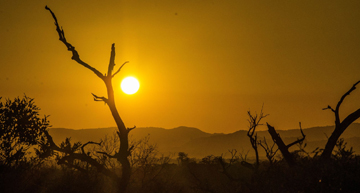
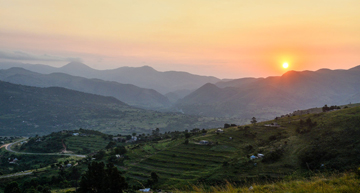
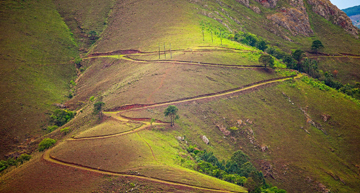
Telecommunication systems
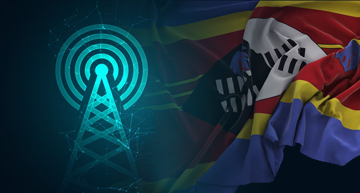
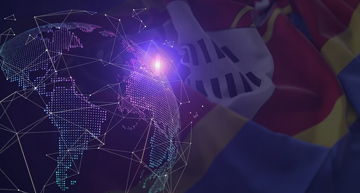
General Assessment: Eswatini was one of the last countries in the world to open up its telecom market to competition; until 2011 the state-owned Eswatini Posts and Telecommunications also acted as the industry regulator and had a stake in the country’s sole mobile network; a new independent regulatory authority was established in late 2013 and has since embarked on significant changes to the sector; mobile market subscriptions have been affected by the common use among subscribers when they use SIM cards from different networks in order to access cheaper on-net calls; subscriber growth has slowed in recent years, but was expected to have reached 8% in 2021, as people adapted to the changing needs for connectivity caused by the pandemic; the internet sector has been open to competition with a small number of licensed ISPs; DSL services were introduced in 2008, development of the sector has been hampered by the limited fixed-line infrastructure and by a lack of competition in the access and backbone networks; Eswatini is landlocked and so depends on neighboring countries for international bandwidth; this has meant that access pricing is relatively high, and market subscriptions remains relatively low; prices have fallen recently in line with greater bandwidth availability resulting from several new submarine cable systems which have reached the region in recent years; in September 2020 a terrestrial cable linked Mozambique with Eswatini and South Africa (2022)
Domestic: Eswatini has 2 mobile-cellular providers; communication infrastructure has a geographic coverage of about 90% and a rising subscriber base; fixed-line stands at nearly 3 per 100 and mobile-cellular teledensity roughly 107 telephones per 100 persons; telephone system consists of carrier-equipped, open-wire lines and low-capacity, microwave radio relay (2020)
International: Country code - 268; satellite earth station - 1 Intelsat (Atlantic Ocean)
Note: The COVID-19 pandemic continues to have a significant impact on production and supply chains globally; since 2020, some aspects of the telecom sector have experienced a downturn, particularly in mobile device production; progress toward 5G implementation has resumed, as well as upgrades to infrastructure; consumer spending on telecom services has increased due to the surge in demand for capacity and bandwidth; the crucial nature of telecom services as a tool for work and school from home is still evident, and the spike in this area has seen growth opportunities for development of new tools and increased services
Transportation
Airports
Total: 14 (2021)
Airports - with paved runways
Total: 2
over 3,047 m: 1
2,438 to 3,047 m: 1 (2021)
Airports - with unpaved runways
Total: 12
914 to 1,523 m: 5
under 914 m: 7 (2021)
Railways
Total: 301 km (2014)
narrow gauge: 301 km (2014) 1.067-m gauge
Roadways
Total: 3,769 km (2019)
